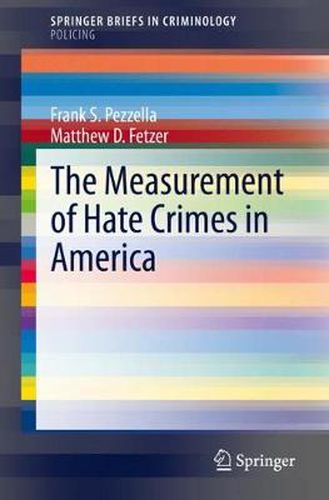Readings Newsletter
Become a Readings Member to make your shopping experience even easier.
Sign in or sign up for free!
You’re not far away from qualifying for FREE standard shipping within Australia
You’ve qualified for FREE standard shipping within Australia
The cart is loading…






This title is printed to order. This book may have been self-published. If so, we cannot guarantee the quality of the content. In the main most books will have gone through the editing process however some may not. We therefore suggest that you be aware of this before ordering this book. If in doubt check either the author or publisher’s details as we are unable to accept any returns unless they are faulty. Please contact us if you have any questions.
Using data from the Uniform Crime Reporting Hate Crime Statistics Program and the National Crime Victimization Survey, this brief highlights the uniqueness of hate or bias crime victimization. It compares these to non-bias crimes and delineates the situational circumstances that distinguish bias from non-bias offending.
The nuances of under-reporting shed light on bias-group and victim reasons for not reporting. By examining measurement issues associated with data collection systems, this brief helps explain why eighty-nine percent of participating law enforcement agencies report zero hate crimes each year. It describes patterns and trends in reporting the volume of general bias motivations and specific bias types, as the most prevalent hate crime offense types and most likely victims and offenders.
With recommendations to address issues in measurement and under-reporting, including an action plan by the Enhance the Response to Hate Crimes Advisory Committee and the International Association of Chiefs of Police, a best practice model by the Oak Creek Police Department, and other promising law enforcement reporting models, this brief provides an increasingly critical resource for law enforcement practitioners and researchers dealing with hate crimes.
$9.00 standard shipping within Australia
FREE standard shipping within Australia for orders over $100.00
Express & International shipping calculated at checkout
This title is printed to order. This book may have been self-published. If so, we cannot guarantee the quality of the content. In the main most books will have gone through the editing process however some may not. We therefore suggest that you be aware of this before ordering this book. If in doubt check either the author or publisher’s details as we are unable to accept any returns unless they are faulty. Please contact us if you have any questions.
Using data from the Uniform Crime Reporting Hate Crime Statistics Program and the National Crime Victimization Survey, this brief highlights the uniqueness of hate or bias crime victimization. It compares these to non-bias crimes and delineates the situational circumstances that distinguish bias from non-bias offending.
The nuances of under-reporting shed light on bias-group and victim reasons for not reporting. By examining measurement issues associated with data collection systems, this brief helps explain why eighty-nine percent of participating law enforcement agencies report zero hate crimes each year. It describes patterns and trends in reporting the volume of general bias motivations and specific bias types, as the most prevalent hate crime offense types and most likely victims and offenders.
With recommendations to address issues in measurement and under-reporting, including an action plan by the Enhance the Response to Hate Crimes Advisory Committee and the International Association of Chiefs of Police, a best practice model by the Oak Creek Police Department, and other promising law enforcement reporting models, this brief provides an increasingly critical resource for law enforcement practitioners and researchers dealing with hate crimes.